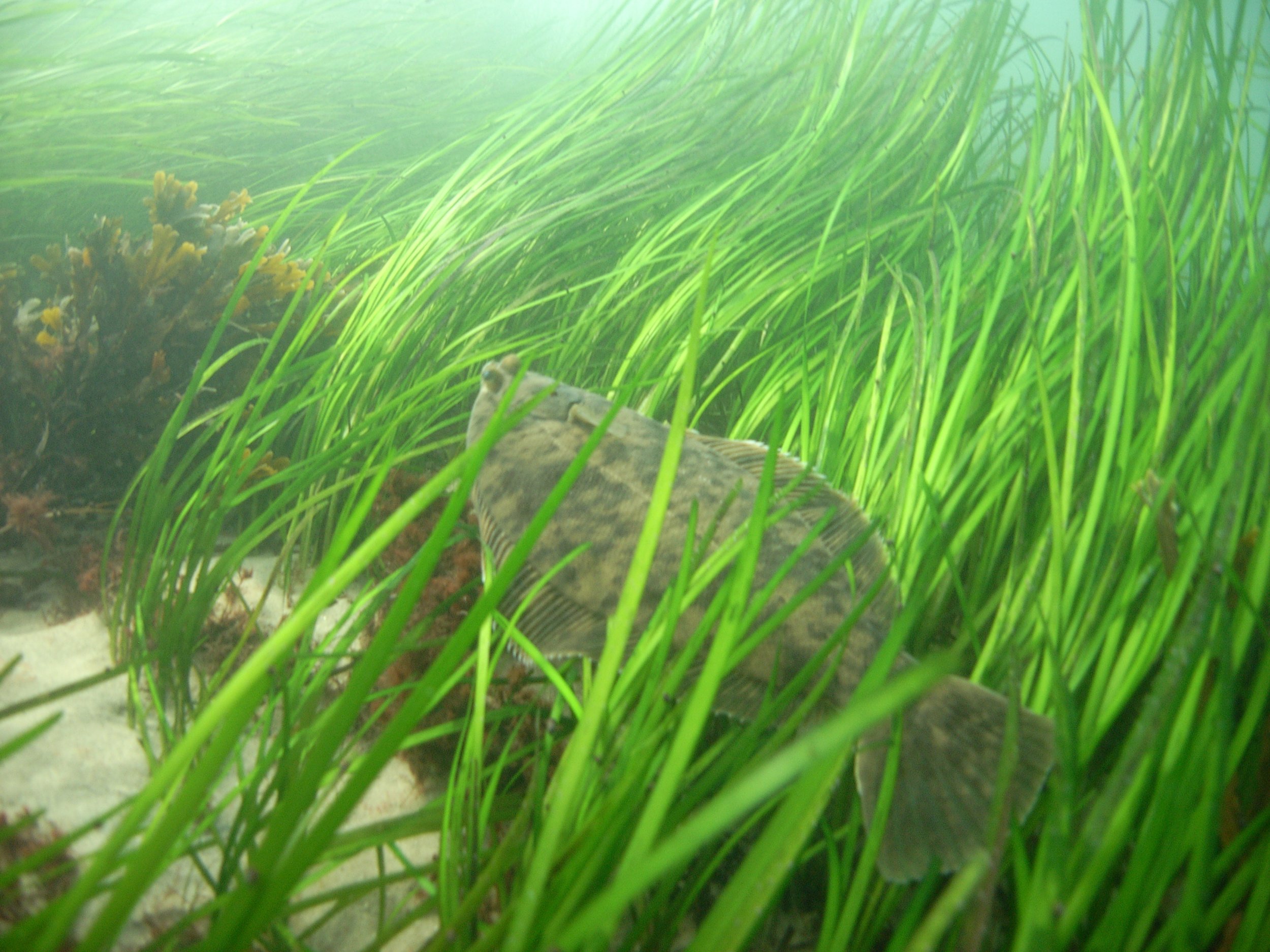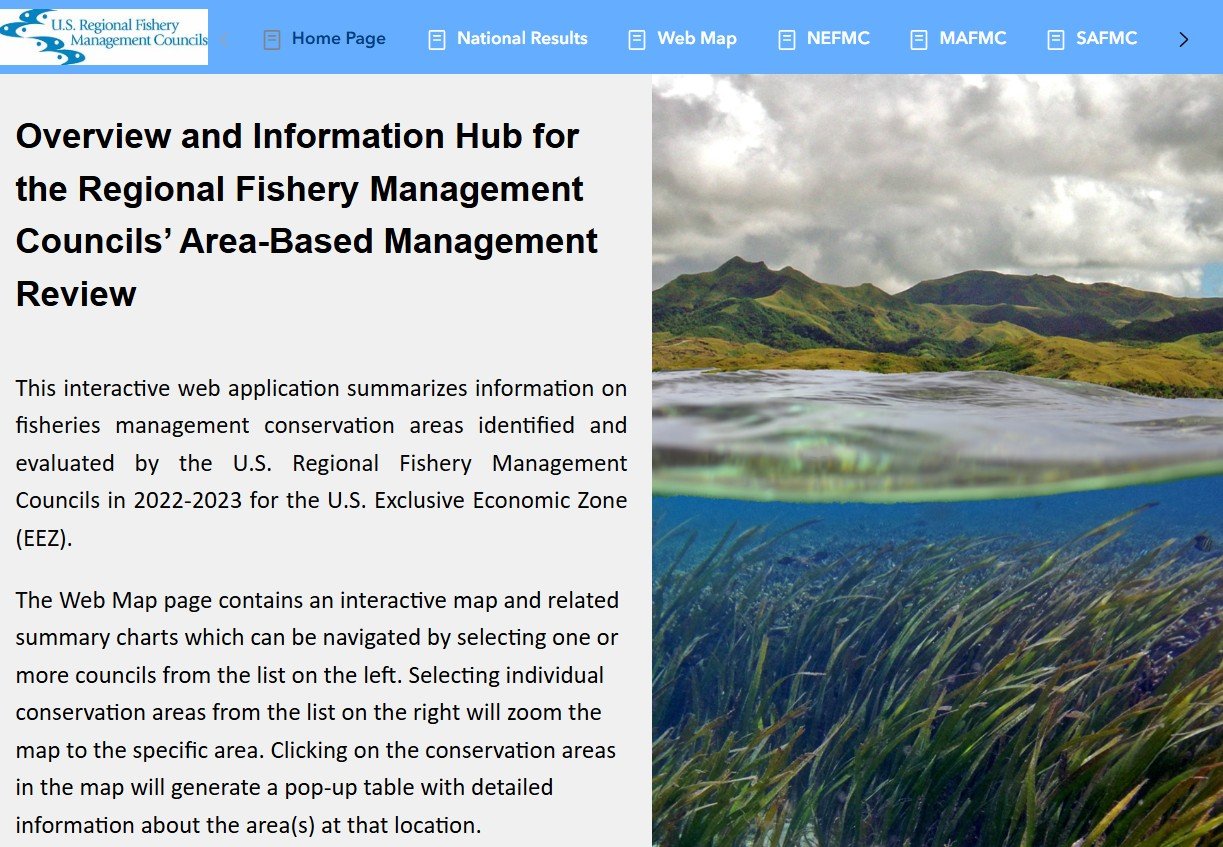Habitat
Fish habitat plays an essential role in the reproduction, growth, and sustainability of commercial and recreational fisheries and is essential to the biodiversity of marine and coastal ecosystems. Marine fish depend on healthy habitats for survival, and many species require specific types of habitats for spawning, breeding, feeding, and growth. The Council works cooperatively with its management partners to protect essential fish habitat areas and minimize adverse impacts of fishing activities on fish habitat.
ESSENTIAL FISH HABITAT
The Magnuson-Stevens Fishery Conservation and Management Act requires federal fishery management councils and NOAA’s National Marine Fisheries Service (NMFS) to designate Essential Fish Habitat (EFH) for species managed under federal fishery management plans (FMPs). EFH is defined as “those waters and substrates necessary to fish for spawning, breeding, feeding, or growth to maturity.” Designation of EFH is important because it means those areas will be given additional consideration before any federal agencies are allowed to carry out activities in those areas. The Council is also involved in the designation of Habitat Areas of Particular Concerns (HAPCs). HAPCs are subsets of EFH which are rare, particularly susceptible to human-induced degradation, especially ecologically important, or located in an environmentally stressed area. Learn more about EFH on NOAA’s Essential Fish Habitat page.
Five-Year EFH Review
Federal regulations require the Councils and NMFS to periodically review EFH provisions of FMPs at least once every five years. The Mid-Atlantic Council completed its most recent 5-year review in April 2025. This review work was conducted in collaboration with the New England Fishery Management Council.
Mid-Atlantic Council EFH-Review Summary Report (including Components 5 and 8)
Components 2 and 6: Fishing Effects and Adverse Effects Minimization
The Mid-Atlantic Council is currently developing an Omnibus (“all species and FMPs”) EFH Amendment to modify the Council’s FMPs based on updated EFH information. Visit the page linked below to learn more.
EFH Profiles for MAFMC Species
Atlantic Mackerel · Atlantic Surfclam · Black Sea Bass · Bluefish · Blueline Tilefish · Butterfish · Chub Mackerel · Golden Tilefish · Illex Squid · Longfin Squid · Ocean Quahog · Scup · Spiny Dogfish · Summer Flounder
HABITAT POLICIES
Council Policy on Impacts of Fishing on Fish Habitat
The Council has adopted a set of policies to address impacts of fishing activities on fish habitat. These policies ensure that changes to fishery management plans incorporate effective approaches to managing the impact of fishing on sensitive fish habitat.
Council Policies on Impacts of Fishing on Fish Habitat (August 2016)
Council Policies on Non-Fishing Activities that Impact Fish Habitat
The Council has also developed a series of policies that articulate its positions on a variety of non-fishing activities as they relate to fish habitat. These policies address the following activities: Wind Energy, Offshore Oil, Marine Transport, Liquefied Natural Gas, and Coastal Development.
Council Policies on Non-Fishing Activities that Impact Fish Habitat (updated February 2022)
HABITAT TOOLS AND APPLICATIONS
The NOAA Fisheries Essential Fish Habitat Mapper is an interactive tool for viewing important habitats for managed fish species. The mapper provides links to supporting materials, including fishery management plans, and the ability to download GIS data.
The Northeast Regional Marine Fish Habitat Assessment (NRHA) Data Explorer is an R-Shiny application used to explore data on trends in fish species distribution at state and regional scales, and to share other products and documentation including model-based outputs and reports. Learn more about NRHA here.
The Fishing Gear Effects on Marine Habitats Database is a searchable collection of literature on the impacts of fishing gear on marine habitats throughout the U.S. and territories. Developed with funding provided by the Mid-Atlantic Council and NOAA’s Office of Habitat Conservation, the database is designed to assist managers, researchers, and stakeholders in evaluating and managing the impacts of fishing gears on marine and estuarine habitats. Learn more here.
Area-based restrictions on fishing activities is one of many tools to conserve fish habitat. The regional fishery management councils have developed an inventory of conservation areas in the U.S. Exclusive Economic Zone (EEZ) where certain fishing activities and/or gear types are prohibited. Learn more and explore the interactive web tools at the link below.
ADDITIONAL RESOURCES
Council Reports and Resources
Proceedings of the MAFMC’s Habitat-Ecosystem Workshop (December 2010)
Ecosystem Level Habitat Considerations Workshop (October 2015)
Report: Regional Use of the Habitat Area of Particular Concern (HAPC) Designation (May 2016)
EAFM Guidance Document, revised 2/8/19
NOAA Fisheries Resources
Related Pages
Staff Contact
Jessica Coakley - (302) 526-5252






